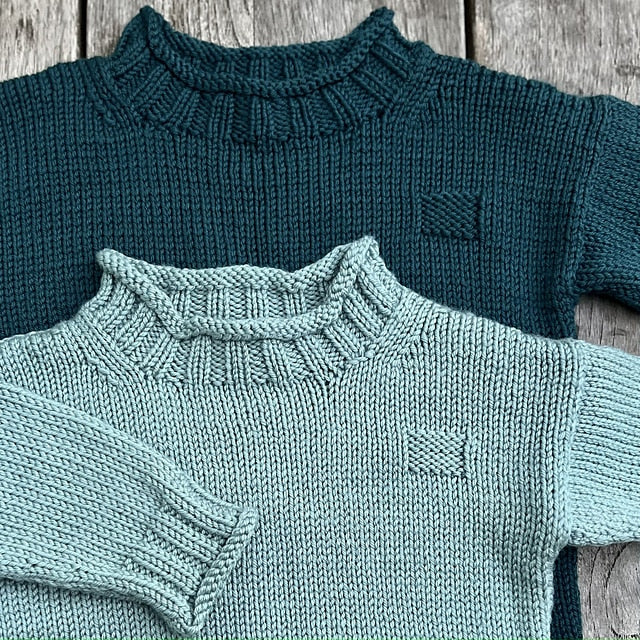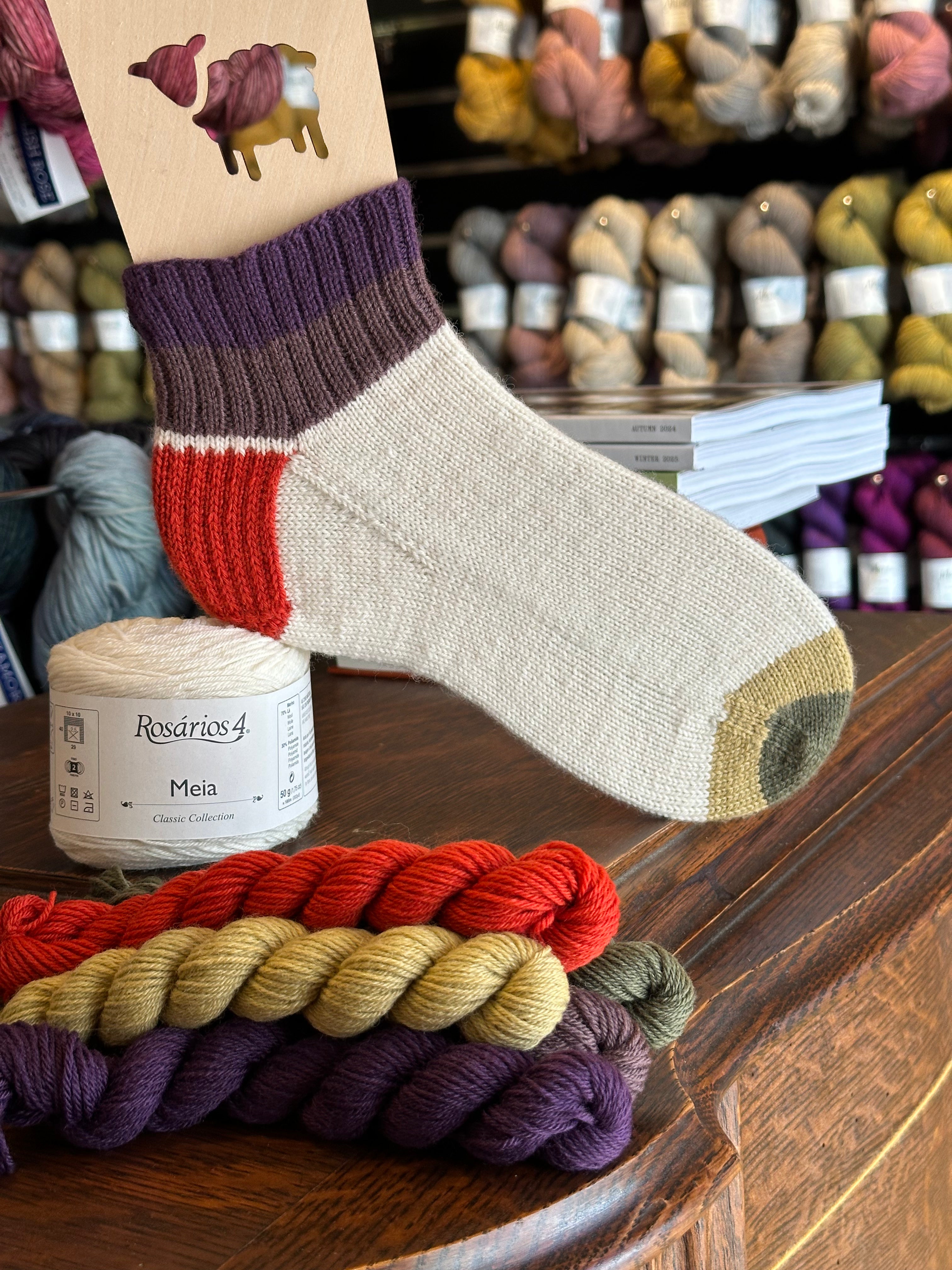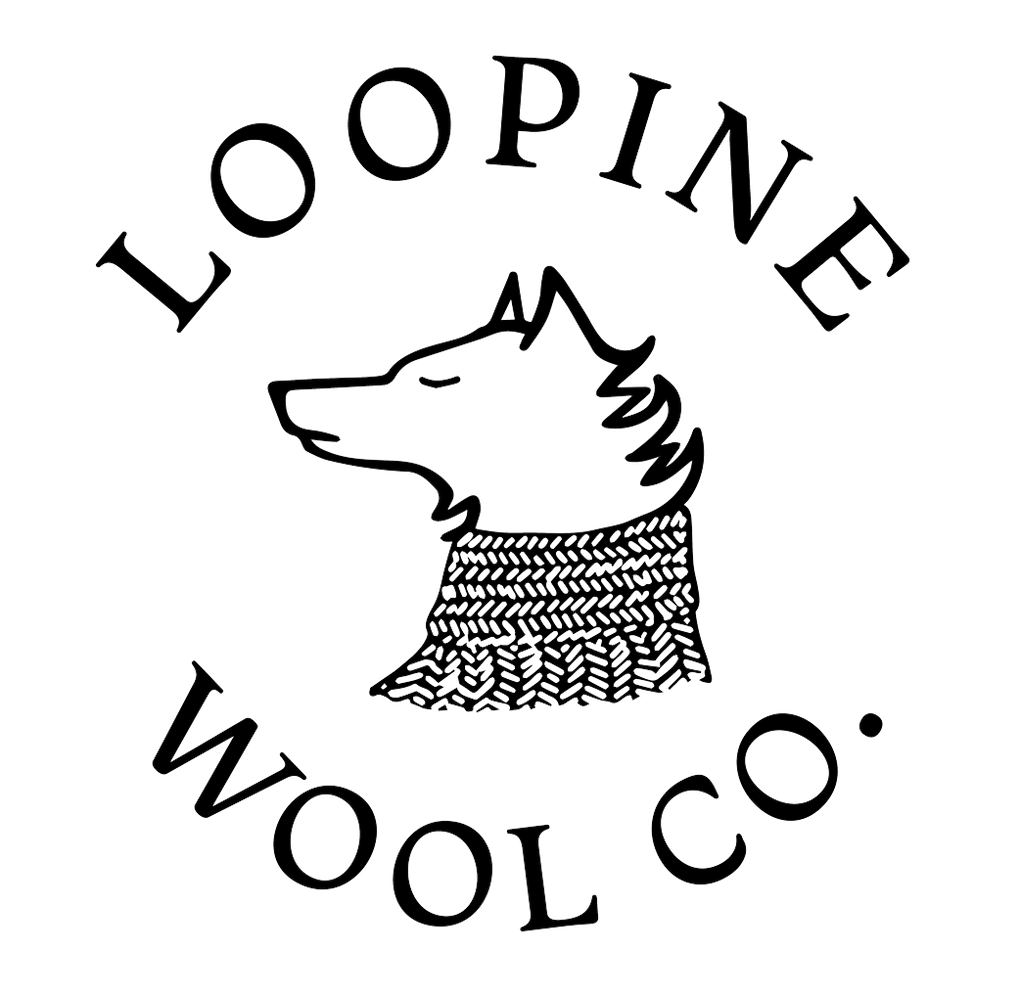So What is Gauge Swatch?
In this blog post we're giving your everything you need to know about gauge swatches (including some lazy gauge swatch ideas)

So What is Gauge Swatch?

How Do I Make a Gauge Swatch?
We have a whole post here about how to pick the right needles for you but if you're knitting from a pattern then look at the designer's recommendations first. They know what drape suits the style of the garment and what needles and yarn will likely create this effect. The suggested needles on yarn labels are more generic and won't necessarily be suited to the pattern your using.
2. Make your swatch bigger than you need.
Most patterns will say something like "26 stitches and 38 rows = 4 inches in stockinette" - but this doesn't mean you should cast on 26 stitches! The edge of the work can distort your measurements so you'll need to cast on more than what they've asked for. I might cast on 38 stitches for this gauge swatch. Make sure to include a garter stitch border to help keep the swatch flat and even.
3. Treat it the same way as your finished project.
I would recommend you let the stitches rest and then block your swatch the same way you usually block your finished garments. This way any shrinkage will be factored into your knitting and you won't accidentally make something too small. I won't go into detail about blocking here, there's so much to say, i'll save it for another newsletter.
4. Check your gauge.
Mark out your measurement on your swatch and then count the number of stitches and rows you've ended up with (I use pins to do this but we also have some cute gauge tools available to make it easier for you). Don't forget - you've cast on more stitches than you need so try to make your square centered on the swatch.
For a swatch with complex stitch patterns you can count the stitches using the pattern itself - you already know how many stitches are between each repeat and with a little math you can use that to work out your gauge.

If you have the right number of stitches - great! If you have too few then try going down a needle size, if you have too many then try going up. Lots of things impact which needle choice is best - it might even be worth changing what material the needles are made from if you have the right number of stitches but not the right number of rows. Holding different strands of yarn together is also a great way to achieve gauge. The important thing to remember is that your tension is not the problem - you just need the right tools for the job. Maybe you want a super dense or super loose fabric.
Different yarn will also create a different swatch so this is your chance to be a bit more creative with your knitting. Swatches are about playing around with yarn as well as needles so you can have a go at trying some different combinations. I've taken a photo of some of the samples we have in the shop, one sample is knitted in wool, one with mohair and wool held double and one is just knitted with mohair.

5. Make another swatch or start your garment!
Knit more swatches until you've found the right needles and yarn for you - once you've found the perfect match then you can get started on your project! Yay!

What If I'm Knitting In The Round?
Um... Do I Really Have to Swatch?
I would highly recommend it. It takes a lot of time and effort to knit a garment so it's worth taking some time before you start to make sure it's something you'll love.
Knitting a gauge swatch is your chance to be creative with a knitting pattern! In a way planning the project, buying yarn and playing around with ideas - that's the fun part.
If you're still not convinced at least try some of these lazy swatch ideas...
Use Your Knitting Project As the Gauge Swatch
You can always start knitting and then check the gauge when you've done enough rows. If it's right you can just keep on knitting and it shouldn't be too much work to start over if you take your measurements early on in the project.
Only Use the Stitch Gauge
For some patterns the stitch gauge is much more important than the row gauge (or it can be easy to add a bit of length if needed). This might save you time knitting out lots of rows.
Phew! That was a lot to take in 😊






Leave a comment